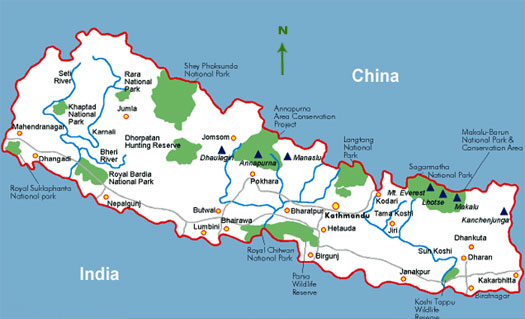
2017-04-21, rss,ktm
– Mahendra Subedi/ Kathmandu
The country’s economy turned ‘astounding’ in the fiscal year 2016/17, thanks to regular power supply and subsequent expansion of the industrial output, regular monitoring of the development projects, efforts for good governance, favourable climatic condition, sufficient rainfall resulting in the record high paddy production in the country’s history, among others. The private sector too increased investments while the banks and financial institutions (BFIs) in the country faced credit crunch for making investments due to high demand and low deposits.
With double-digit inflation round the year and less than one per cent of economic growth rate (0.8%), the country’s economy had faced serious ‘tragedy’ in the last fiscal year. The Gorkha Earthquake, the subsequent economic blockade from our ‘friendly and closest’ neighbour India and the long-standing agitations from the seems-ever disgruntled Madhes-centric political parties were behind the bleak picture of economy which some even termed as economic depression and almost a situation of stagflation. According to Investopedia, stagflation is a condition of slow economic growth and relatively high unemployment accompanied by rising prices and a decline in Gross Domestic Product (GDP).
But, due to resiliency of Nepal’s economy, it revived and came out from both the shocks of zero per cent growth and high inflation. The Prachanda-led government has received accolades from all quarters of the society for the same.
The situation turned better from worse this year. The climate turned favourable resulting in better agricultural yields while the post-earthquake reconstruction bids proceeded ahead though not remarkably. More than that, the expansion in the construction sector showed green signal to better the sluggish economy while an end to the hours-long power cuts paved the ways for the private sector’s growth.
This year economic growth rate is expected to revive to up to 6.2 per cent provided that we meet some preconditions–increment in the capital expenditure, timely elections to the local levels and scaling up the post-earthquake reconstruction.
But, we have the towering challenge to retain the ‘high’ economic growth rate that Nepal is attaining for the first time in 25 years. We have to meet some prerequisites to ensure sustainability of the economic growth rate in the years to come. Categorically, environment conducive should be created for smooth operation of industries that provide goods and services. Equally important is that the unwarranted strikes should come to a halt, i.e. political stability should be established in the country for better performance of the private sector.
Former vice-chairperson of National Planning Commission Dr Deependra Bahadur Kshetri states that the environment for building trust matters much to lure foreign direct investment (FDI) and for this to channelize, the hurdles in land acquisition should be addressed and the provision of one-door policy should be adopted strongly.
However, News Editor of vernacular Karobar Daily, Gajendra Budhathoki, says that first and the foremost thing we need is massive investments in the infrastructure sector. “Both the domestic and foreign investments are required in infrastructure sector,” said Budhathoki, who is also the author of three books.
The second thing we should prioritize is nation’s industrialization. “The investors flock where they can get more returns. So, all seven provincial governments should prepare policy and legal frameworks for industrialization,” Budhathoki suggests.
The third yet most crucial sector is commercialization of agriculture. The current government has taken some steps forward but are not sufficient. Integrated farming, unhindered supply of chemical fertilizers, modernization of agriculture and commercialization of agri-produces could be some of the tools to promote agriculture. Completion of the under-construction irrigation projects including Sikta Irrigation Project which is supposed to irrigate thousands of hectares land in Banke and Bardiya districts, Rani Jamara Kulariya Irrigation Project and the like are crucial. So, implementation of the plans and programmes in an integrated manner would result in sustainable and rapid economic growth rate.
Dr Kshetri, also the former Governor of the Nepal Rastra Bank (NRB), said that for the leapfrog economic growth, politicians’ mindset should change and they should come out of the box of their petty partisan interest. He sees problems in government’s failure to propel the capital expenditure and suggests the government to use all possible measures to increase capital expenditure as proportion to the recurrent expenditure.
As we are extremely slow in capital expenditure and only 36 per cent of the total capital expenditure is achieve in the nine months of the current fiscal year, the nation needs to enhance the capacity of the responsible government entities to spend the allocated funds.
Budhathoki says that timely monitoring and evaluation of the development projects as well as performance-based rewards and punishment should be initiated without any delay. The chiefs of the development offices should be deputed only after signing performance contract deals.
Dr Kshetri is of the opinion that the role of cooperative, private sector and the government sectors needs to be redefined if we were really committed to making a leapfrog in the economic growth rate and ensuring its sustainability.
But, Budhathoki opines that the major challenge we are facing at present for achieving sustainable and rapid economic growth rate is lack of financial sources. “We need as high as Rs 300 billion for the implementation of the new federal set up. However, we have limited sources of revenue generation,” he says adding we have to make the budget of around Rs 1500 billion. “Filling the bucket of Rs 1500 billion is a big challenge of the hour,” he cautions.





